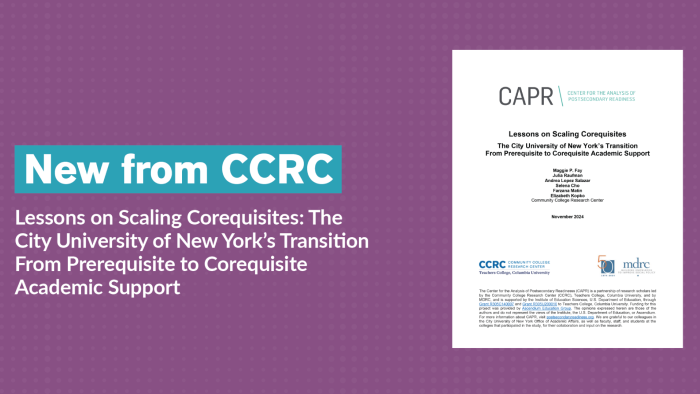
New Evidence and Next-Generation Questions on Shortened Course Formats
Author: Jessa Valentine
Deputy Director – Learning and Impact
The panel on shortened courses featured findings from the following researchers.
- Gus Gluek from University of Pennsylvania’s Graduate School of Education (Tennessee study).
- XunFei Li from University of California at Irvine’s School of Education (Virginia study).
- Robbie Linden from University of California at Davis’s Wheelhouse Center (California study).
Shortened courses are increasingly popular in postsecondary education, particularly among community colleges. Also called accelerated courses or condensed courses, shortened courses provide the same curricular content and number of credit hours in about half the time of a traditional semester. Typically taught over seven-to-eight weeks rather than the traditional 14-to-16-week semester, the pace of these courses is more intense. For this reason, students tend to take fewer courses in any given (shorter) term but have more terms across an academic year in which they can enroll. By providing students with more entry and exit points and by protecting learners against losing a full semester’s worth of courses if they need to stop out, shortened courses may be particularly beneficial for adult learners from low-income backgrounds who are more likely to be balancing their schoolwork with employment and family commitments.
A growing body of research points to the benefits of shortened courses, but studies to-date have been largely descriptive in nature, focused on a single institution, and/or limited to the summer term only. In short, the field has lacked rigorous evidence at a larger scale about the effectiveness of shortened courses on student success.
But this is changing. In fall 2024, I was delighted to serve as a discussant for a panel on shortened courses at the annual conference of the Association for Public Policy Analysis and Management. As part of this panel, three groups of researchers presented findings from analyses of community college system data in Tennessee, Virginia, and California. By leveraging large-scale data and using methods to account for student characteristics that may influence their selection into courses and their outcomes, these are the first studies to provide more definitive evidence on impacts of shortened courses on student outcomes.
Although analyses by some of the research teams is ongoing and findings are preliminary, these three statewide studies point to positive impacts of shortened courses on learners’ course pass rates and course grades, as well as on learners’ success in courses taken in subsequent semesters. Importantly, early findings also indicate that shortened courses may be especially beneficial for adult learners, who are more likely to be managing coursework alongside other commitments and for whom the additional flexibility of shortened courses may be particularly important.
As an organization that’s keenly interested in structural redesign efforts within institutions that can support learner success, Ascendium is eager to learn from the results of these studies and from future studies that can continue to expand the evidence base on this important topic. Moving forward, three areas seem especially ripe for continued learning on shortened course formats.
For which learners are shortened courses most impactful, and why?
As noted, the studies suggest that adult students may experience more substantial benefits from shortened courses. Continued exploration of for whom shortened courses are especially impactful — leveraging disaggregated quantitative data to examine outcomes for different groups, and leveraging qualitative data collected from students and college staff to understand why benefits may vary across groups — will be critical to ensuring learners have equitable experiences.
How does student learning in shortened courses compare with learning in traditional-length semester courses?
A criticism of shortened courses is that the accelerated timeframe may negatively affect student learning, given less time for reflection and reinforcement of concepts and the potential for students to experience increased stress levels. The studies of Virginia and Tennessee systems are some of the first to examine the impacts of taking a shortened course on students’ performance in subsequent courses in a sequence, an important indirect measure of the depth of student learning. Preliminary findings suggest that students perform just as well, if not better, in subsequent courses when compared to students taking traditional-length courses. However, we need more evidence on student learning in shortened courses versus traditional-length courses based on direct assessment of student competencies.
What are the key ingredients for successful implementation of shortened courses?
Building on existing resources that support institutions in making the transition to offer shortened courses, we need better information on the key organizational and operational factors that support implementation of shortened academic terms at both the institution and system level. Deeper understanding of the enabling conditions for success will require in-depth qualitative inquiry that leverages the experience and perspectives of students, institutional faculty and staff, and system administrators on key factors supporting implementation and scale.
Ascendium and its partners will be supporting answers to these critical questions over the next few years. We recently made a grant to Achieving the Dream to explore how we can further support institutions’ scaling of these structural innovations and learn from them. We hope to have more to share about this partnership later in the year.



